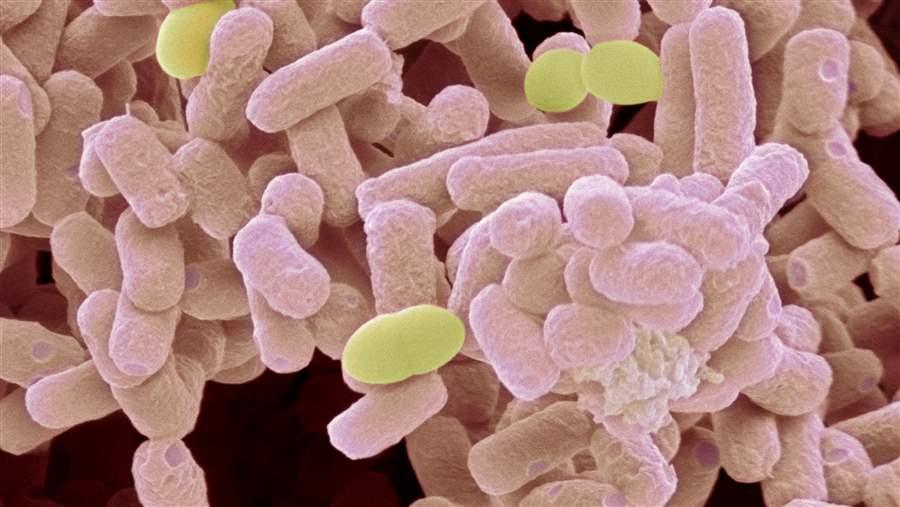Foodborne Illnesses Still a Major Public Health Challenge
CDC’s latest data underscore need for new approaches to track, reduce outbreaks

In 2016, disease rates increased in the United States for many foodborne pathogens, including Shiga toxin-producing E. coli, pictured here.
© Getty Images
Data recently released by the Centers for Disease Control and Prevention’s Foodborne Diseases Active Surveillance Network (FoodNet) for 2016 demonstrate that the United States continues to make little progress driving down the rates of infection by bacteria commonly transmitted through food. FoodNet is the U.S. surveillance system for foodborne illness. It tracks confirmed outbreaks in a representative geographic area covering 15 percent of the population.
Preliminary FoodNet 2016 results show unsettling trends. Illness rates for Campylobacter, Listeria, Salmonella, Shigella, Shiga toxin-producing E. coli O157 , and Yersinia remained unchanged compared with 2006-08, while rates for Vibrio and Cryptosporidium showed a statistically significant increase. These illnesses, which are largely preventable, lead to long-term health problems and even death, particularly for more vulnerable groups such as young children and older adults. Improving the health of Americans requires new approaches to preventing such infections, and robust surveillance is a crucial priority in order to evaluate the impact of food safety policies.
Unfortunately, the nation’s foodborne illness surveillance system is at risk. This year’s FoodNet report highlighted the growing impact of a new clinical tool that allows physicians to more quickly diagnose and treat intestinal infections. Known as a culture-independent diagnostic test (CIDT), this technological advance benefits individual patients but makes it more difficult for public health agencies to detect foodborne outbreaks and monitor trends. With increased reliance on CIDTs, clinicians are less likely to order bacterial cultures, which are the backbone of current surveillance systems and generate the detailed genetic “fingerprints” that public health officials use to track bacterial strains and their relationships to each other.
In addition to faster test results to guide treatment decisions, many CIDTs can screen for a number of different pathogens simultaneously. This means that infections that previously went undiagnosed may become more likely to be captured by the surveillance system. While this is a good thing because it makes the data more complete, it can also make it difficult to compare foodborne illness rates over time.
Regardless of the challenge posed by CIDTs, the trends in CDC’s data demonstrate that food safety authorities and companies need more effective strategies to significantly reduce the number of Americans who fall ill from contaminated food. As the regulations implementing the FDA Food Safety Modernization Act are beginning to be enforced, this will hopefully lead to reductions in foodborne illnesses linked to FDA-regulated food products soon. At the same time, it is imperative to look at ways to modernize safety oversight of meat and poultry, regulated by the U.S. Department of Agriculture, in order to drive further reductions in foodborne infections.
Sandra Eskin directs The Pew Charitable Trusts’ work on food safety.






